Hey there, curious minds! 🚀 Ever wondered why serverless computing is making waves in the tech world? Well, you're in the right place because we're about to embark on an exciting journey to uncover the "why" behind serverless in this blog.
The Rise of Serverless
Let's start with the basics: What exactly is serverless? It's a cloud computing model that's turning heads because it lets you focus on writing code without worrying about the underlying infrastructure. So why is it becoming the future of software development? Buckle up!
Serverless allows you to focus on code and speed up delivery while DevOps helps manage the deployment and operations of serverless functions.
Serverless architecture refers to applications that are built using third-party services like AWS Lambda or custom functions that run in temporary containers. It frees you from having to provision and manage virtual servers.
Some benefits of serverless architecture are:
Faster development: You don't need to manage infrastructure so developers can focus only on code. This speeds up development and delivery.
Lower costs: You pay only when your code runs so operational costs are very low. There are no idle servers to maintain.
Scalability: The functions scale automatically based on demand so you don't need to implement scaling code.
Simpler deployment: Without servers to manage, deploying code is simplified.
"Let's Get Hands-On: A Fun Project Guide to Demystify Serverless!"
Lambda Functions (code logics in lambda functions)
API Gateway (to access these functions we need API Gateways)
Dynamo DB ( has "PAY_PER_REQUEST billing means you pay only for what you use, making it budget-friendly for dynamic workloads.")
S3 (packaging for all the codes)
Cloud Watch ( capture all the logs for the above application)
IAM (everything will be communicated through IAM roles)
Both AWS CloudFormation and Terraform are powerful infrastructure-as-code tools, and the choice between them often comes down to your specific needs and familiarity with the AWS ecosystem.
"For this project, we'll use AWS CloudFormation to create resources only when we acneed them, thereby optimizing cost-efficiency."
Prerequisites :
Update System :
sudo apt update
Install node:
sudo apt install nodejs
Check version:
if it is any version which is not supported with serverless then install the node version through nvm:
sudo apt install curl
curl https://raw.githubusercontent.com/creationix/nvm/master/install.sh | bash
nvm install 16.0.0

Install serverless:
npm install -g serverless

Clone:
clone a GitHub repo: then use git checkout to be on dev branch:
https://github.com/LondheShubham153/aws-node-http-api-project.git
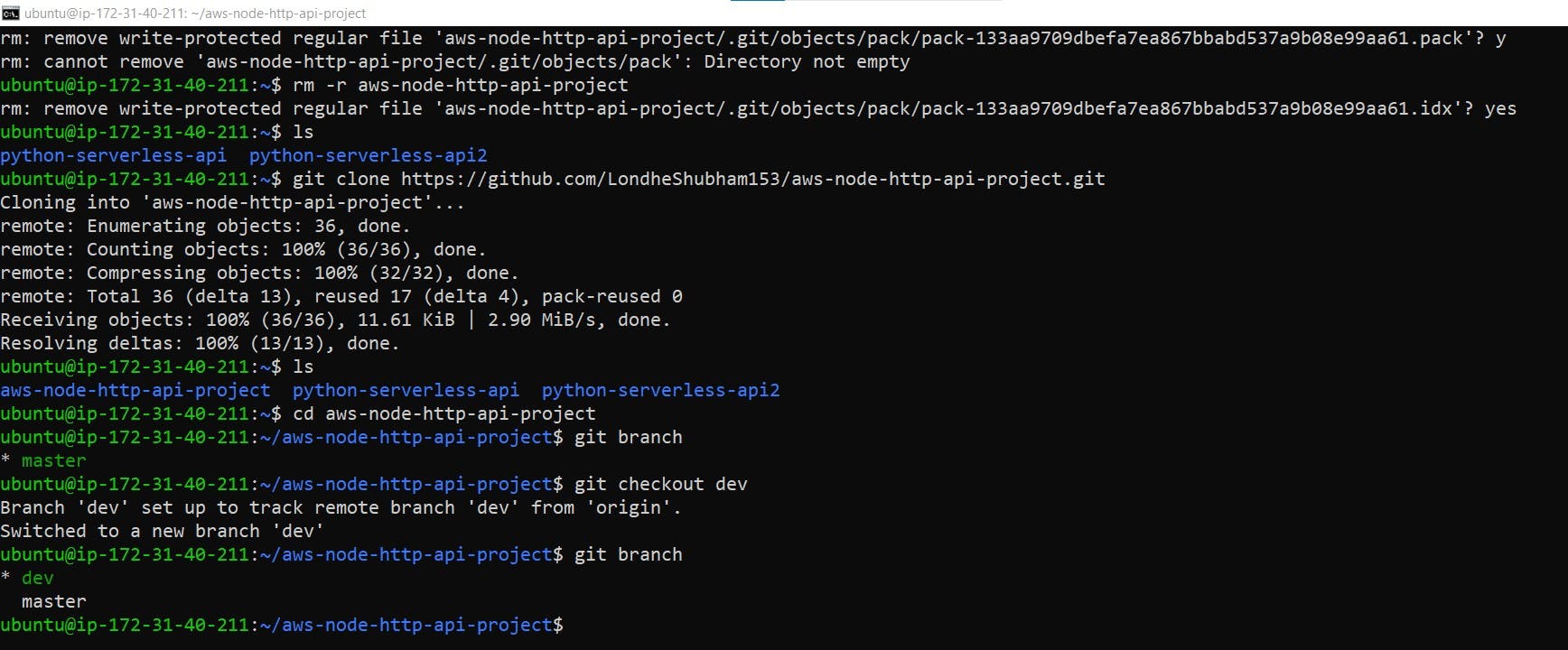
Make an account on Serverless :
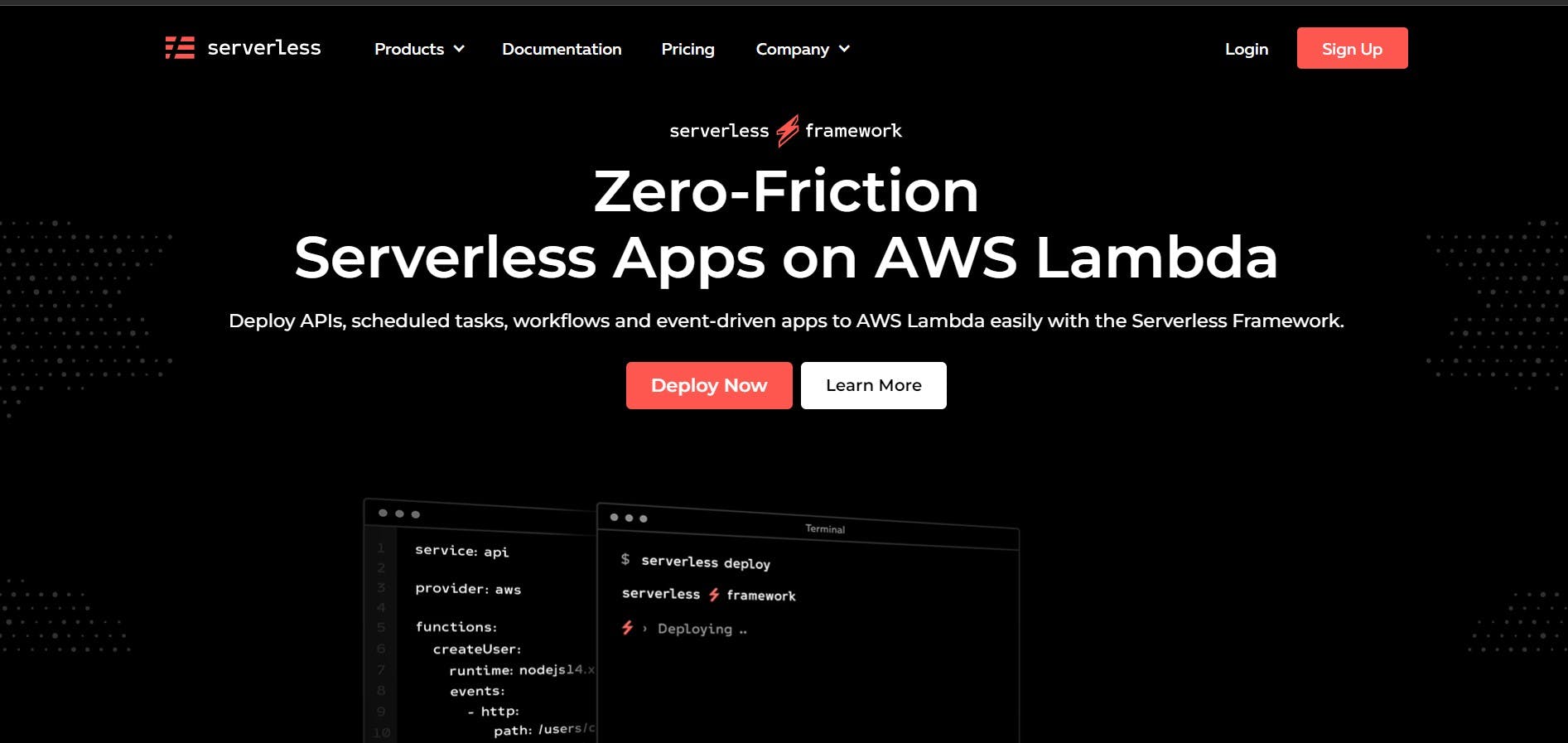
click on create app:
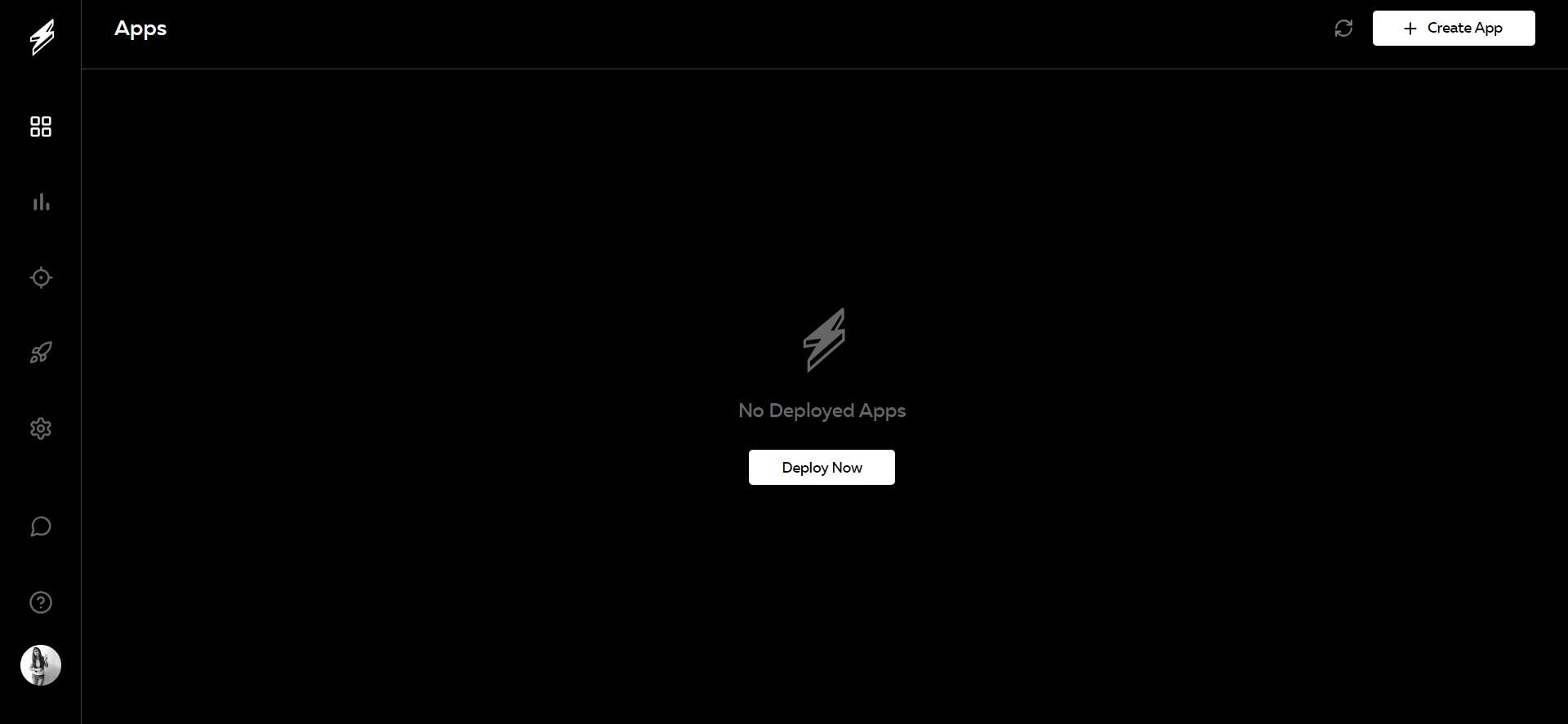
click on existing project:

copy this command:

paste this command in the console:

now select yes :

Your app will be deployed successfully:

"You can view the application within your AWS CloudFormation stack.":
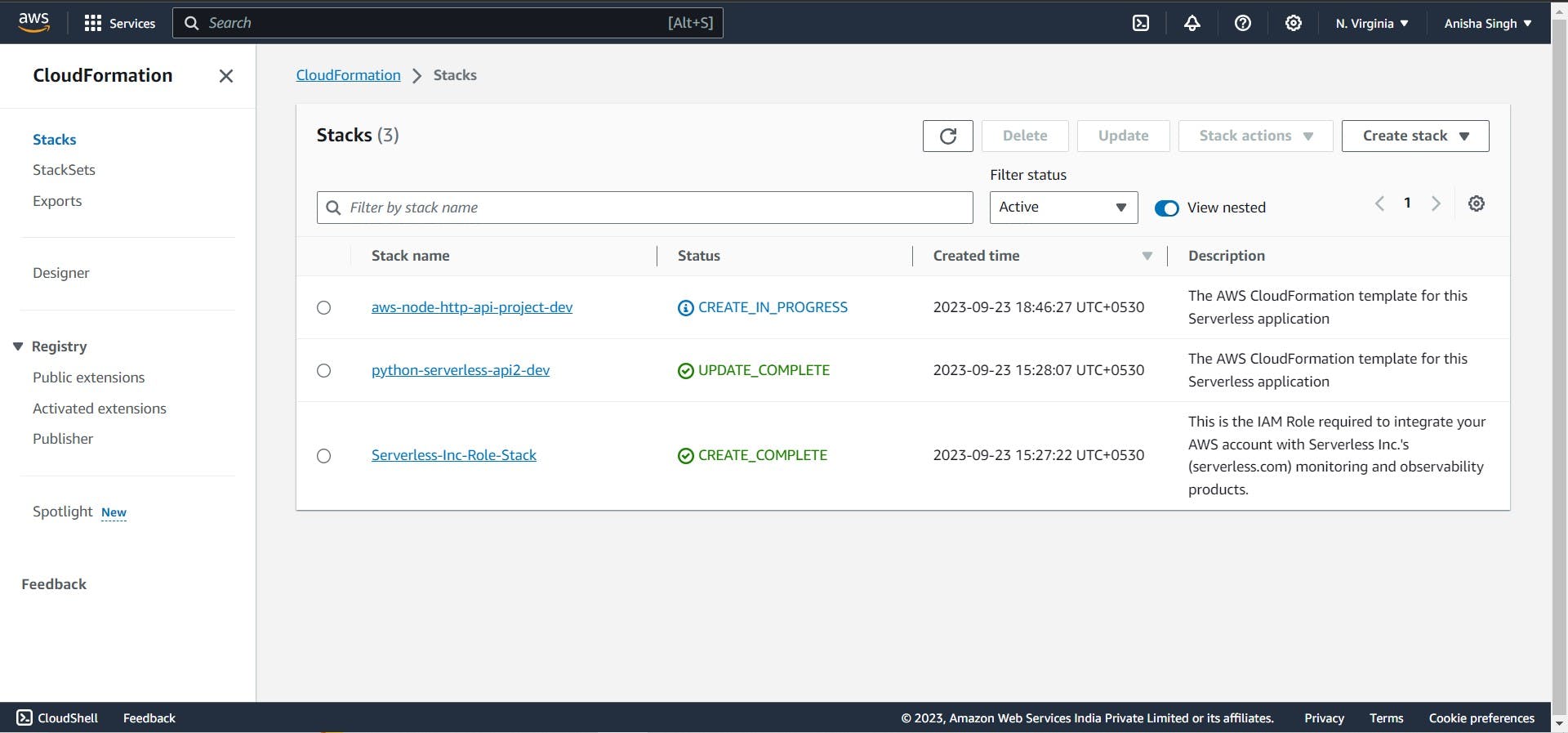
"Your application will be accessible from the Serverless Dashboard's dashboard.":
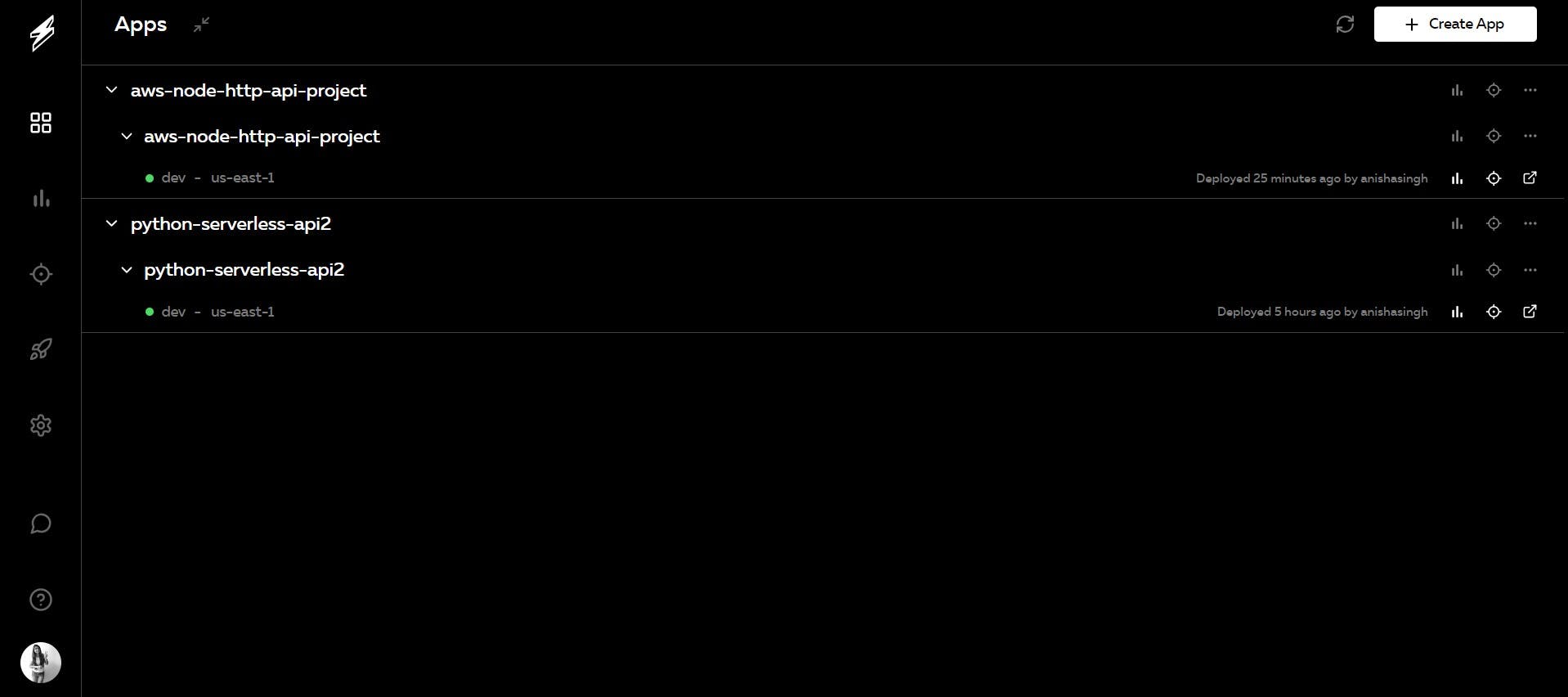
"To visualize your creation through a diagram, you can..."
Click on the cloud formation and then click on Update Tab:
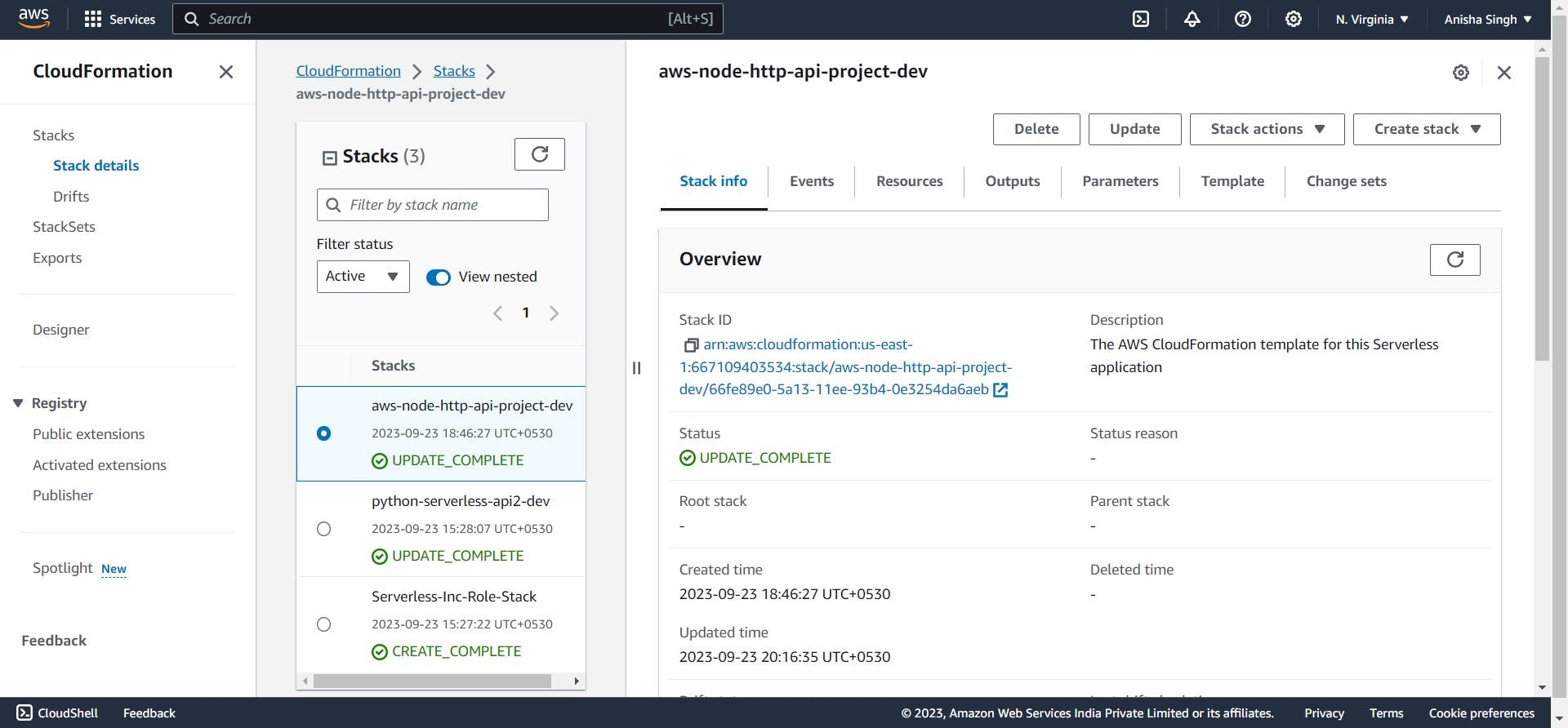
Select Edit template in designer:
and then click on View in Designer :
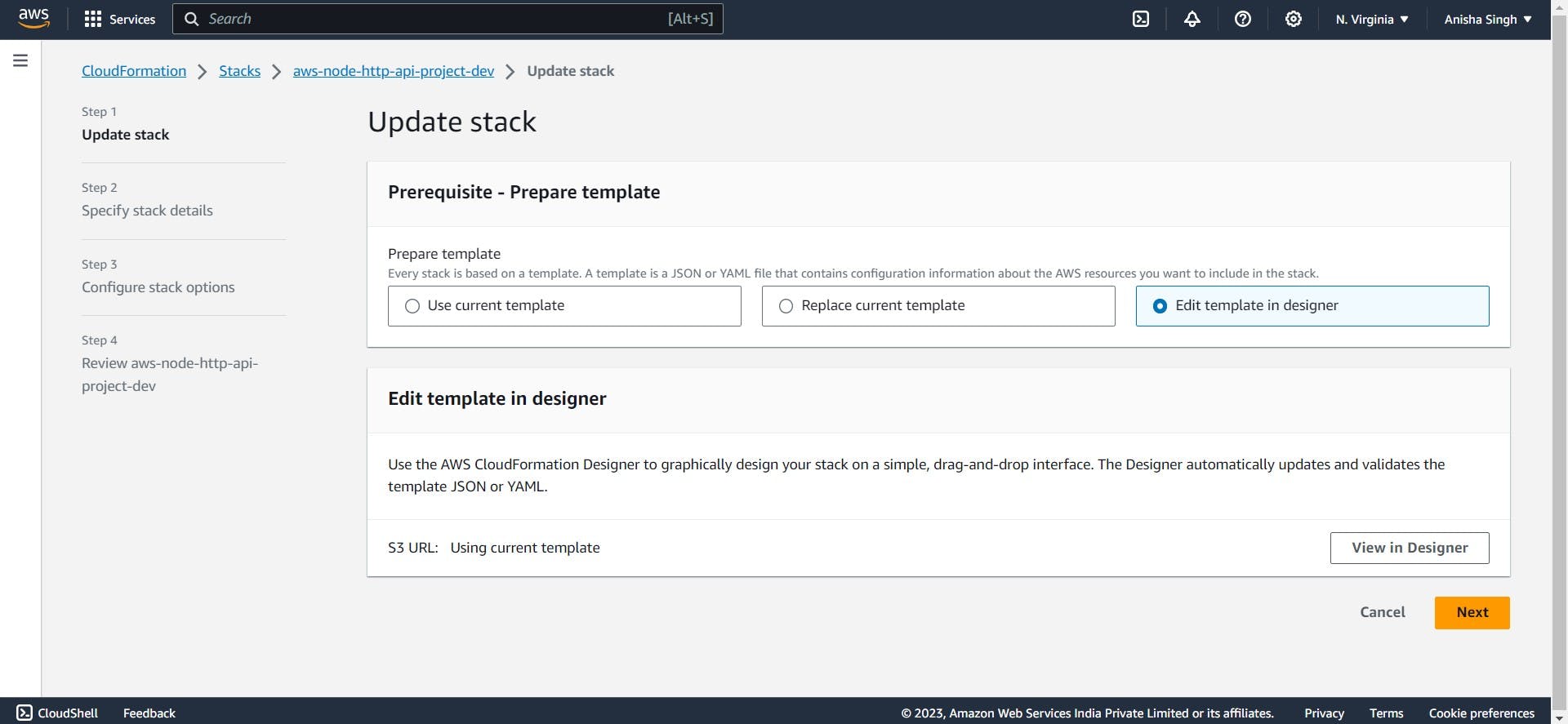
"Here's a simple picture of your entire system(of your project):"
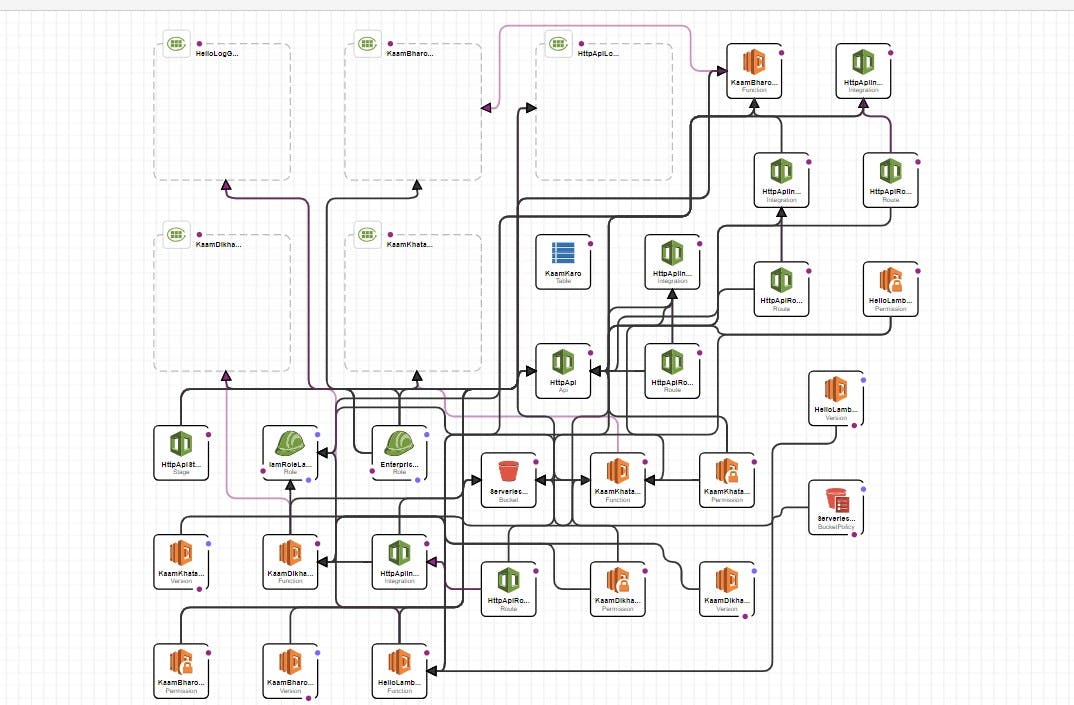
"Feel free to give this a shot and stay tuned for more upcoming blogs. Best of luck, and embrace the serverless journey!"
